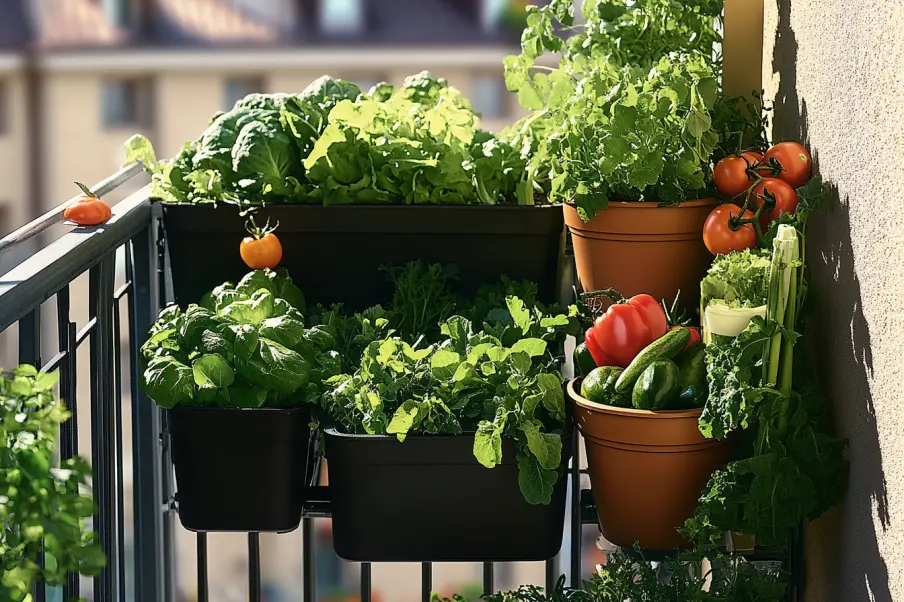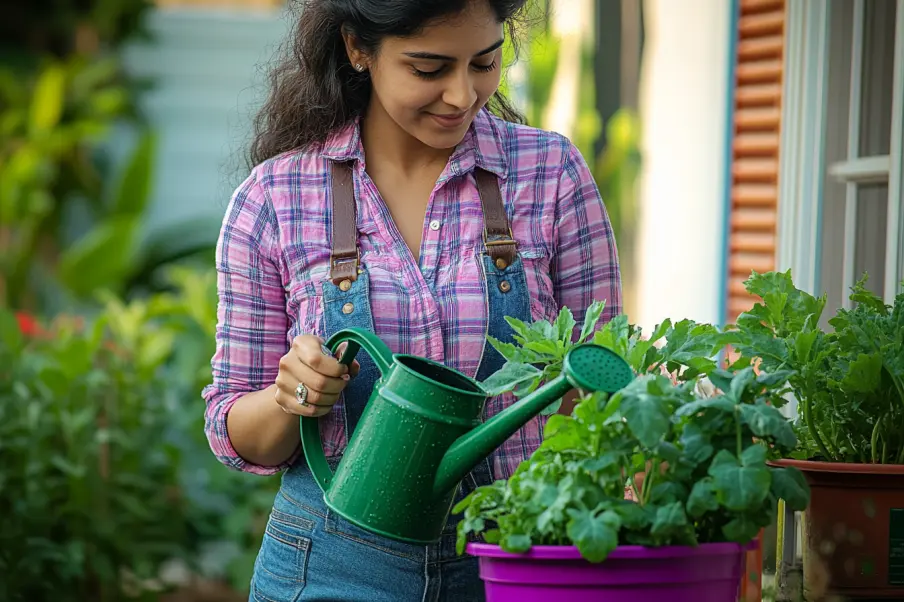Introduction
If you’re looking for a practical and space-saving way to grow fresh produce, DIY Bucket Gardening for Small Spaces is the perfect solution. Whether you have a tiny balcony, a rooftop, or a small backyard, using buckets for gardening allows you to cultivate a variety of vegetables efficiently. This guide will take you through everything you need to know about setting up and maintaining your own bucket garden, ensuring a thriving harvest in limited space.
Why Choose Bucket Gardening?
Benefits of Bucket Gardening for Small Spaces
Bucket gardening is an ideal solution for those with limited outdoor space. Whether you live in an apartment, a house with a small yard, or simply want to maximize your gardening potential, using buckets allows you to grow a variety of vegetables efficiently.
Cost-Effective and Accessible Gardening Method
Unlike traditional gardening, bucket gardening requires minimal investment. Food-grade buckets, which can often be sourced for free or cheaply, provide an affordable alternative to raised beds or large planters. Additionally, bucket gardening is beginner-friendly, requiring little expertise.
Best Locations: Balconies, Patios, Rooftops
The versatility of bucket gardening allows you to grow vegetables on balconies, patios, rooftops, or even indoors near a sunny window. Since buckets are portable, they can be moved to optimize sunlight exposure throughout the day.

Materials & Tools Needed for Bucket Gardening
Choosing the Right Buckets
Best Bucket Sizes
- 5-gallon buckets are ideal for most vegetables, providing adequate root space.
- 10-gallon buckets allow for larger plants or companion planting.
- Always opt for food-grade buckets to ensure safety for edible plants.
New vs. Recycled Buckets
- New buckets ensure no previous chemical contamination.
- Recycled buckets can be used if properly cleaned and disinfected.
Essential Tools & Supplies
Soil Mix & Compost
A high-quality soil mix with compost ensures healthy plant growth. Use a blend of:
- Organic potting soil
- Compost for nutrients
- Perlite or sand for better drainage
Fertilizers & Nutrients
- Organic fertilizers like compost tea or fish emulsion work well.
- Slow-release granular fertilizers provide long-term nourishment.
Watering Equipment
- Self-watering buckets help maintain moisture levels.
- Drip irrigation systems automate watering for consistent hydration.
How to Set Up Your DIY Bucket Garden (Step-by-Step Guide)
Step 1: Prepare the Buckets
Before planting, clean the buckets thoroughly:
- Wash with soap and water.
- Disinfect using a diluted bleach solution (1:10 ratio).
Step 2: Create Proper Drainage
Good drainage prevents root rot. To achieve this:
- Drill multiple holes at the bottom of each bucket.
- Add a layer of gravel or small rocks to improve drainage.
Step 3: Fill Buckets with the Right Soil Mix
A well-balanced soil mix promotes healthy growth:
- 60% potting soil
- 30% compost
- 10% perlite or sand
- Use organic options for sustainable gardening.
Step 4: Planting Your Vegetables
- Direct sowing: Ideal for root vegetables like carrots and radishes.
- Transplanting seedlings: Best for tomatoes, peppers, and leafy greens.
- Spacing tips: Avoid overcrowding by following recommended plant spacing.
Best Vegetables to Grow in Buckets
1. Tomatoes
Tomatoes thrive in buckets with good drainage and a sturdy support system.
2. Peppers (Bell & Chili)
Peppers grow well in buckets with ample sunlight and consistent watering.
3. Cucumbers
Use a trellis to support vining cucumber varieties.
4. Carrots
Choose shorter carrot varieties that fit well in deep buckets.
5. Beans (Pole & Bush)
Bush beans are more compact, while pole beans require vertical support.
6. Lettuce & Leafy Greens
Fast-growing and perfect for shallow buckets or window boxes.
7. Radishes
Quick-growing and ideal for small containers.
8. Potatoes
Use a deep bucket and layer soil as the plant grows to maximize yield.
9. Onions & Garlic
Onions and garlic require well-draining soil and shallow but wide buckets.
10. Zucchini & Summer Squash
These plants need a large bucket and plenty of space for growth.
Read More: 10 Easy DIY Gardening Ideas with Vegetables
Bucket Gardening Tips for Success
Watering & Drainage Best Practices
- Water plants deeply but avoid overwatering.
- Check soil moisture before watering to prevent root rot.
Fertilizing & Soil Maintenance
- Apply organic fertilizers every 2-3 weeks.
- Regularly top up compost to replenish nutrients.
Sunlight & Placement Tips
- Most vegetables need at least 6-8 hours of sunlight daily.
- In hot climates, use shade netting to protect plants from excessive heat.
Pest & Disease Management
- Common pests: Aphids, spider mites, and caterpillars.
- Organic solutions: Neem oil, insecticidal soap, and companion planting.
Growing Herbs in Buckets
Best Herbs for Small-Space Gardening
- Basil, mint, cilantro, and chives thrive in buckets.
Companion Planting with Vegetables
- Basil enhances tomato growth and repels pests.
- Chives deter aphids and improve onion growth.
Creative Ideas for Bucket Gardening
Hanging & Stacked Buckets for Vertical Gardening
- Save space by hanging buckets or stacking them with support.
Painting & Decorating Your Buckets for Aesthetic Appeal
- Personalize your garden with colorful and artistic designs.
Upcycling Household Items as Bucket Planters
- Old storage containers and paint buckets can be repurposed.
Common Mistakes to Avoid in Bucket Gardening
Using the Wrong Soil Type
- Avoid garden soil; use a potting mix with good aeration.
Skipping Drainage Holes
- Lack of drainage can lead to root rot and waterlogged plants.
Overcrowding Plants in a Single Bucket
- Follow spacing guidelines to prevent competition for nutrients.
External Resource: Guide on DIY Bucket Gardening
Conclusion: Start Your DIY Bucket Garden Today!
Starting a DIY bucket garden is an excellent way to grow fresh vegetables in small spaces. Follow the simple steps outlined above, choose the best vegetables, and apply proper gardening techniques for a thriving harvest. Begin small and expand your garden as you gain confidence.
What’s your experience with bucket gardening? Share your journey in the comments below!

